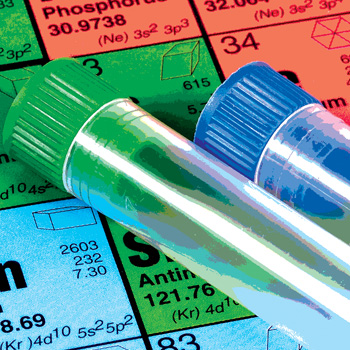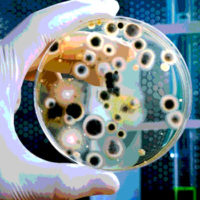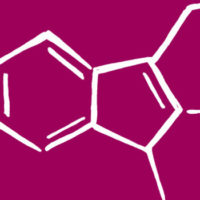It’s no secret that making products that sell means making products that consumers want to buy. Without a doubt, when it comes to the quality attributes of foods and beverages, overall sensory appeal —color, flavor, texture, aroma—ranks high in the development of a consumer’s preference for one product over another. But there are other key quality indicators that today’s consumers consider when choosing what products they will buy that are increasingly important in the purchase decision, including the product’s food composition attributes relative to nutritional value, the food additives and ingredients used in the finished product, and the level of chemical or naturally occurring additives that the product might contain.
Food labels, for example, are playing an increasingly important role in providing consumers with information pertaining to the quality parameters of products. In November 2005, the International Food Information Council (IFIC) Foundation commissioned Cogent Research to conduct a quantitative survey of 1,060 Americans regarding perceptions and behaviors on health-related issues, including nutrition. The survey showed that, next to the expiration date (68%), 58% of consumers frequently seek the Nutrition Facts panel when they decide to purchase or eat a food or beverage. Interestingly, nearly all of (93%) said they use at least one piece of information from the Nutrition Facts panel, with more than half using up to four label elements: calories, total fat, serving size and sugars.
In the Food Marketing Institute’s (FMI) report Trends—Consumer Attitudes and the Supermarket, 2000, almost all shoppers surveyed (96%) said nutrition is a “somewhat” or “very important” factor when they purchase food, with only two other concerns considered “very important” by over half of the survey respondents: price (71%) and product safety (70%). Of the nutritional concerns, the four most frequently cited in the survey are fat, cholesterol, salt and sugar.
Beyond consumer preference trends for nutritional content value are those that center on health benefit considerations. With the January 2006 implementation of the U.S. Food and Drug Administration (FDA) trans fat labeling final rule, consumers will now see the amount or presence of trans fat listed on the food label for most packaged food products sold in the U.S., enabling them to compare products based on the amount of trans fat per serving as part of their dietary planning.
Similarly, one need only take a look at the sales growth of the sports/alternative beverage category in recent years to realize the remendous consumer demand for foods with value-added functional properties that offer health benefits or a perceived quality enhancement, such as antioxidant ingredients. At the same time, consumers are savvy about what they don’t want to see in a food product as it pertains to quality (i.e., pesticide residues or genetically modified organisms), which vary from person to person, depending on their individual perception of health risk. And, of course, consumers expect that the products they purchase are safe and do not contain chemical or other hazards that make the products unsafe. If product safety criteria are not met, the product cannot be a “quality” product.
Making products that sell requires not only a forward-thinking mindset to keep abreast of critical consumer, market and regulatory trends, but keen attention to the technological advances that can streamline systems to help your company stay ahead of those trends. Testing the quality attribute parameters of your food products is critical to your business to optimize product quality for consumers, regulatory and labeling compliance as appropriate, and of course, your product sales. In this article, we briefly review some of the new or innovative analytical chemistry instrumentation available for the determination of important quality parameters in food and beverage products.
QA/QC Automated Analyses
Several advanced automated instruments are on the market that measure the amount of fat/lipids, moisture, protein, ash, sugars, sodium, pH, water activity and other compositional or nutrition label related elements of food and beverage products. These automated food chemistry instruments can be useful as part of the processor’s quality assurance/quality control (QA/QC) testing program, particularly if speed to result or transferable data capabilities are required.
Dionex Corp.’s (Sunnyvale, CA) award-winning ICS-3000 Reagent-Free Ion Chromatography (RFIC) system is designed to provide fast and accurate analysis of an wide range of application needs in the food lab, including determination of inorganic anions and cations, organic acids, nitrate/nitrite and extracted food contaminants, such as pesticide residues.
The high-throughput ICS-3000 RFIC system is a dual system in a single system footprint. With dual conductivity and electrochemical detection, notes the company, the food lab technician can analyze common anions, iodide, sulfide, cyanide, phenols, organic acids, and carbohydrates. If configured with dual electrochemical detection, one can simultaneously analyze amino acids and carbohydrates.
CE Elantech, Inc. (Lakewood, NJ), distributes the Thermo Electron FlashEA 1112 N/Protein Analyzer, which provides accurate and reproducible nitrogen/protein determinations in less than 5 minutes per sample. The analyzer is based on the “Dynamic Flash Combustion” technique that is today an accepted and established alternative to the traditional Kjeldahl method, and has received approval by AOAC, AOCS, AACC, and others. The analyzer is widely used for the determination of nitrogen/protein in cereals, grains and beans, and promises accurate results from trace level to high percentage of nitrogen in the analysis of the nutritional quality of these and other food samples.
CEM Corp.’s (Matthews, NC) SMART ProFat instrument provides analytical results for moisture, fat and protein content of meat and poultry raw materials and pre-blends in less than 5 minutes. The SMART ProFat combines microwave moisture measurement with data modeling analysis to rapidly evaluate beef, pork, chicken and turkey meat with high accuracy and precision. The company states that this rapid analysis can be used for process control to make blend corrections, release materials, and ensure least cost formulation. The system uses an AOAC-approved method to rapidly measure the moisture content and a simple curve fitting program to provide the best estimate of fat and protein content.
Shimadzu Scientific Instrument’s (Columbia, MD) QP-2010 Series Gas Chromatography/Mass Spectrometry (GC/MS) system offers QC labs a way to identify and quantitate trace components in flavors and fragrances of food and beverage samples with high speed and accuracy. The system also offers the laboratory the ability to analyze for other critical food safety and quality attributes, such as determining fatty acid composition in edible oils and quantifying pesticide residues or food additives in food and agricultural products.
Fast-GC/MS, notes the company, uses short columns with small internal diameters to accomplish a high level of separation performance and the mass spectrometer enables the system’s rapid scan speeds. In a comparison study, the analysis of 30 pesticide residues were completed in 5 minutes by QP-2010 Fast-GC/MS, while the standard method took 20 minutes.
Because water activity affects so many quality attributes of foods—from shelf life and safety, to texture, flavor, and aroma—it is important to be able to measure it accurately and rapidly. Decagon Devices, Inc. (Pullman, WA) has introduced the newest member of the AquaLab water activity meter family, AquaLab Lite, an intermediate benchtop water activity meter for product quality that incorporates technology from both its AquaLab Series 3 and the portable, ultra-compact Pawkit water activity meter. AquaLab LITE also uses the same sample cups and verification standards as the AquaLab Series 3 and the Pawkit. The company notes that the new unit is easy to use, with a menu-based three-button interface to make measurements quick and straightforward and offers a 5-minute read time to reduce waiting and increase time to process samples.
Chemical Residue Analyzers
With globalization of trade and regulattions, the ability to perform multi-residue analyses for pesticides, toxins and veterinary drug residues has never been in greater demand by QC labs.
Waters Corp. (Milford, MA) has developed a quality control solution for food testing with its award-winning Ultra Performance Liquid Chromatography (UPLC) system, the AQUITY UPLC. The advanced chromatographic system can detect pesticide and veterinary drug residues in a wide range of food samples with high resolution, as well as confirm quality attributes of complex foods and beverages as rapidly as 75 seconds per sample.
According to the company, the ACQUITY UPLC system’s high-pressure fluidics optimizes flow rates to make the most of small particle technology and its sample-handling design is designed to ensure exceptionally low carryover and reduced cycle time. The associated high-speed detectors, both optical and mass, contribute to increased sensitivity and help manage the heightened speed and resolution requirements of UPLC.
Pickering Laboratories (Mountain View, CA) has introduced the Vector PCX, which has been tested for a variety of applications including manufacturing quality assurance, food safety, agricultural testing and water safety, and is part of the company’s comprehensive post-column derivatization solution of instruments, columns, reagents and support. The Vector PCX is a rugged, low-cost post-column system designed for high-throughput analysis of target compounds. It is compatible with all major high performance liquid chromatography (HPLC) systems, and is ideal for basic testing in demanding, 24/7 laboratory environments that require low capital outlay, analytic accuracy and long life for its post-column instrumentation, components and reagents.
A Wave of Water Analysis
Water quality is an important measurement parameter for any food processor. Some of 2005’s innovative instruments include:
Advanced Instruments (Norwood, MA) introduced the Model 4250 Cryoscope in November at the Worldwide Food Expo in Chicago. The diagnostic instrument, which dairy labs use to measure the water content in milk, incorporates a new design and electronic technologies that enhance usability, accuracy and reliability. Milking equipment on the farm, transportation and storage vessels are all “wet cleaned,” leave ample possibility for the accidental addition of water to milk. It is a safety and quality issue, notes the company. Not only are consumers who buy milk entitled to receive milk and not milk diluted with water, in underdeveloped countries, where milk is not heat treated prior to consumption, there is a risk of waterborne pathogens such as cholera being carried over into milk.
The Advanced 4250 Single-Sample Cryoscope uses the industry-preferred freezing point method to precisely determine added water in milk. With its on-board sample identification, broad measurement range and optimal sample size requirement, the instrument provides accurate results in just 2 minutes.
CHEMetrics’ (Calverton, VA) Model V-2000 photometer is an advanced portable microprocessor-based LED water analyzer that is pre-programmed to measure 30 analytes automatically, including nitrate, nitrite, phenols, and sulfate. According to the company, the key elements of colorimetric analysis—reagent formulation, measurement and dispensing of the reagent, and measurement of the sample—are all embodied in this system, which uses CHEMetrics’ Vacu-vials self-filling reagent ampoules.
The exact quantity of pre-formulated reagent needed for a single test is sealed under vacuum in the tapered tip ampoule. The tip is scored for dependable fracture when the user is ready to perform an analysis. When the tip of the ampoule in the sample is snapped, it fills instantly as sample flows into the tube and mixes with the color-forming reagent inside. The user can opt to use visual or instrumental methods, such as the V-2000, to quantify results.
Innovations in Analytical Chemistry Instrumentation




